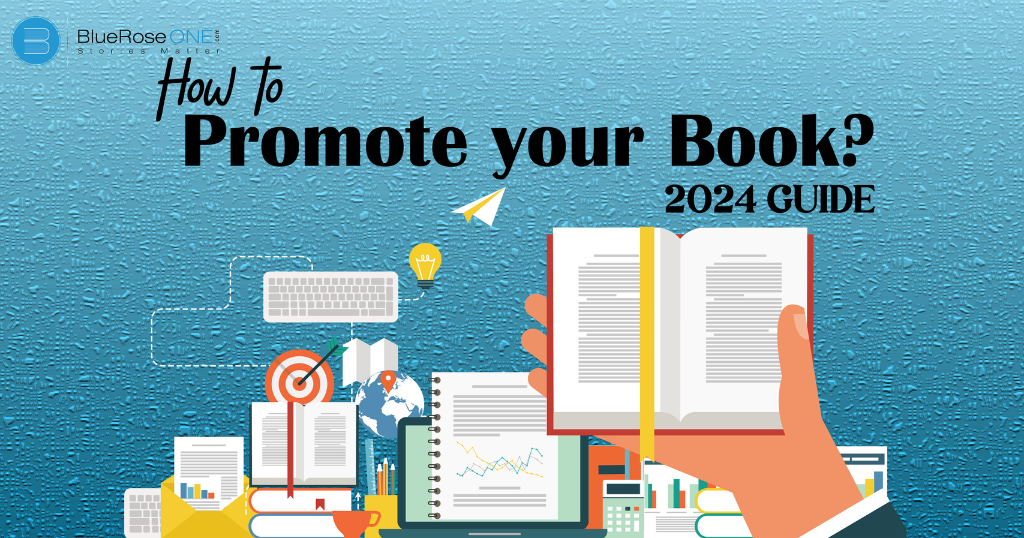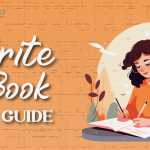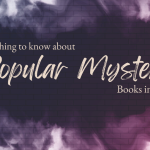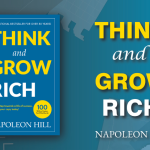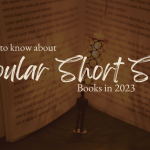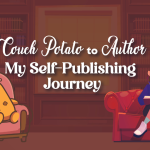The landscape of book marketing has undergone significant transformations in recent years, propelled by the ever-evolving digital era and changing reader preferences. As we step into 2024, authors find themselves amidst a dynamic environment that demands innovative strategies to ensure their literary creations don’t merely grace the shelves but captivate the hearts and minds of readers.
In this comprehensive guide, we will explore the most effective and up-to-date methods for marketing and promoting your book in 2024.
Understanding the Contemporary Reader
- Digital Dominance
In the contemporary literary landscape, an author’s digital footprint plays a pivotal role in connecting with readers and establishing a lasting impact. In the era of smartphones and constant connectivity, a compelling online presence is not just a luxury but a necessity. At the forefront of an author’s digital arsenal is the author’s website, a virtual space that serves as a hub for all things related to the writer and their work.
Building a captivating author website involves more than just displaying book covers and a brief bio. It’s about creating an immersive experience for visitors, offering insights into the author’s personality, writing process, and the journey behind each book. The website becomes a platform for readers to delve deeper into the author’s world, fostering a sense of connection that transcends the pages of a book.
Engaging in social media platforms amplifies an author’s reach and impact. Platforms like Instagram, Twitter, and Facebook provide direct channels for communication with readers. Regular updates, engaging content, and interactive posts turn social media into a dynamic space where authors can share glimpses of their writing lives, book recommendations, and even connect with fellow authors. These platforms, when used authentically, transform casual readers into dedicated fans.
Leveraging online book communities further extends an author’s reach. Platforms like Goodreads offer spaces for readers to discuss, review, and recommend books. Authors actively participating in these discussions not only gain visibility but also build a community around their work. It’s not merely about selling a book; it’s about fostering a genuine connection with readers who share a passion for literature. - Data-Driven Decision Making
Harnessing the power of data analytics is not merely a trend; it’s a strategic imperative for authors looking to make informed decisions and optimise their marketing efforts.
Platforms such as Goodreads, Amazon Author Central, and Google Analytics provide authors with invaluable insights into reader behavior. Goodreads, a platform dedicated to readers, allows authors to see how their books are being discovered, track reader reviews, and even participate in discussions. Amazon Author Central offers a centralised space for authors to manage their Amazon book sales, analyse customer reviews, and explore keywords that lead to book discovery.Google Analytics, a robust tool for website analysis, provides a comprehensive view of visitor interaction with an author’s website. From understanding the most visited pages to tracking the effectiveness of promotional campaigns, authors can fine-tune their online presence based on real-time data.
The era of guesswork in book marketing is long gone. With data-driven decision-making, authors can tailor their strategies to align with what readers truly respond to. For instance, if analytics reveal a surge in interest whenever the author shares behind-the-scenes glimpses on social media, they can amplify this approach for greater engagement.
Leveraging Advanced Marketing Techniques
- Book trailers and visual content
Book trailers, short and impactful, have become a powerful tool on social media platforms. These trailers, akin to movie previews, provide a sneak peek into the essence of the book, utilising engaging visuals and captivating soundtracks. A well-crafted book trailer not only entices readers but also serves as a shareable asset, amplifying its reach across various platforms.
Moreover, author videos have emerged as a personal and relatable way for writers to connect with their audience. These short videos, often shared on social media or author websites, allow readers to get a glimpse of the person behind the pen. Authors can share insights into their writing process, discuss the inspiration behind their books, or simply convey a personal message to foster a deeper connection with their audience. - Podcasting and audiobooks
The auditory medium has witnessed a surge in popularity, making podcasting an invaluable tool for authors to engage with their audience. Author podcasts offer a unique platform to share personal anecdotes, discuss writing journeys, and provide industry insights. By hosting interviews with fellow authors or experts, writers can diversify their content, appealing to a broader audience. The intimate nature of podcasts allows authors to establish a more profound connection with listeners, creating a community around their literary endeavours.
Additionally, the rise of audiobooks has opened new avenues for authors to reach a growing market of audio enthusiasts. Considering the increasing popularity of audio content, converting a book into an audiobook can expand its accessibility. Authors can collaborate with professional narrators to bring their words to life, tapping into a demographic that prefers the immersive experience of listening to a story. - A Virtual reality book launches
As technology advances, virtual reality (VR) has entered the realm of book marketing, offering authors innovative ways to connect with readers. Virtual reality book launches provide immersive experiences that go beyond traditional events. By collaborating with VR developers, authors can transport readers into a virtual space, recreating the ambiance of a physical book launch. This not only accommodates a global audience but also adds a layer of excitement and interactivity, making the book launch a memorable event.
The immersive experiences offered through VR book launches create a unique opportunity for readers to engage with the author, ask questions, and participate in the celebration of the book. This innovative approach not only sets a book apart in a crowded market but also demonstrates the author’s willingness to embrace cutting-edge methods to connect with their audience.
Crafting a Captivating Online Presence
- Author Website
Your author website serves as the virtual storefront for your literary works, making its design and content crucial components of your online presence. The visual appeal of your website should resonate with your writing style and genre. A clean and aesthetically pleasing layout enhances the user experience, while easy navigation ensures visitors can seamlessly explore your site. Include essential information such as your bio, book summaries, and upcoming releases, allowing readers to connect with you and your literary journey.
Integrating a blog into your website is a powerful way to keep your audience engaged. Regular updates with compelling content related to your genre, writing process, or literary insights give readers a reason to revisit. This dynamic interaction not only keeps your website fresh but also provides a more intimate connection with your readership. - Social media mastery
Selecting the right social media platforms is a strategic decision that aligns with your target audience. Platforms like Instagram and TikTok may be ideal for reaching a younger demographic, while Facebook and Twitter appeal to a broader age group. Understand where your potential readers spend their time and tailor your presence accordingly.
Consistent engagement on social media is paramount. Regularly interact with your audience through posts that showcase your personality, polls that involve them in decision-making, and live sessions that create real-time connections. Authenticity is the key to fostering a loyal readership, so let your unique voice shine through in your social media interactions. - Email Marketing
Building a subscriber list is a foundational element of your author’s marketing strategy. Incentivize readers to subscribe to your newsletter by offering exclusive content, sneak peeks, or even special discounts on your books. This creates a sense of exclusivity, encouraging readers to stay connected.Segmentation and personalisation are the pillars of effective email marketing. Tailor your newsletters based on reader preferences, ensuring that each communication feels personalized. Whether it’s recommending books based on their past purchases or providing insights into your writing process, this personalised approach strengthens the bond between you and your readers, making them feel seen and valued.
Collaborations and Partnerships
- Author Collaborations
Author collaborations, particularly in the realm of book marketing, have become a powerful strategy for expanding an author’s reach and connecting with diverse audiences. Here are key collaborative approaches that authors can leverage to enhance their promotional efforts. - Joint Book Launches
Collaborating with fellow authors for joint book launches offers a mutually beneficial avenue for expanding audience reach. By sharing their promotional efforts, authors tap into each other’s networks, introducing their work to new readers. This collaborative approach creates a synergy that amplifies the impact of the book launch, attracting a broader and more engaged audience. - Cross-promotions
Cross-promotions involve authors teaming up for social media campaigns or giveaways. This collaborative effort allows authors to leverage each other’s followers, increasing visibility and engagement. Whether through joint giveaways or shared promotional content, cross-promotions enhance discoverability and create a sense of community among readers interested in similar genres. - Influencer Marketing
Engaging with influencers, especially bookstagrammers and booktubers, has become a prominent strategy for reaching wider audiences. Sending copies of the book to influencers for reviews or features not only provides valuable social proof but also exposes the work to the influencer’s dedicated following. Establishing authentic author-reader relationships with influencers goes beyond transactional engagements, fostering long-term connections that extend beyond individual book promotions. - Book Clubs and Reading Communities
Virtual book clubs, thriving in the online space, present excellent opportunities for authors to engage with readers. Participating in discussions or hosting Q&A sessions within these clubs enables authors to connect directly with their target audience. Providing exclusive content, such as bonus chapters or behind-the-scenes insights, adds value for dedicated reading communities, strengthening the author-reader bond.
Public Relations and Traditional Media
- Compelling press releases:
Crafting a compelling press release is akin to creating a captivating synopsis for your book launch or any significant milestones in your literary journey. A well-written press release not only announces your book but also tells a story that captivates the media and potential readers. The key is to distil the essence of your book, emphasising what makes it unique and newsworthy. From the headline to the body text, each element should draw the reader in and leave them eager to explore the depths of your literary creation. - Author Media Kits
An author media kit serves as your professional dossier, presenting a comprehensive snapshot of your literary persona. This kit should include high-resolution images, author bios, and detailed information about your book. High-quality visuals, such as author photos and book cover images, enhance the kit’s visual appeal. The author bio should be crafted to reflect your journey, achievements, and the essence of your writing. Include details about the book, such as summaries, key themes, and release dates. This toolkit becomes an invaluable resource for journalists, bloggers, and event organisers, streamlining their access to essential information and increasing the likelihood of media coverage. - Traditional Book Tours
In the digital age, the traditional book tour has transformed into a hybrid experience, seamlessly blending physical and virtual components. Hybrid tours offer the best of both worlds, allowing authors to engage with local audiences through physical events while simultaneously reaching a global readership through virtual platforms. These tours can include book signings, readings, and discussions at local bookstores or libraries, paired with virtual author talks, social media live sessions, and online interviews. Seeking opportunities for author interviews in newspapers, magazines, or radio shows further amplifies your book’s visibility. Traditional book tours, whether physical or virtual, provide a personal connection with readers, fostering a sense of community around your literary work.
Publish & Promote Your Book Globally
Paid Advertising Strategies
Platforms like Facebook and Instagram offer sophisticated targeting features that enable authors to tailor their campaigns to reach specific demographics. By utilising these tools, authors can pinpoint their desired audience based on factors such as age, interests, location, and reading preferences. This targeted approach ensures that promotional efforts are directed towards individuals most likely to be interested in the book, thereby maximising the impact of the campaign.
Investing in professional visuals and crafting compelling ad copy is imperative to cut through the digital noise and capture the audience’s attention. In a scroll-heavy environment, eye-catching visuals and engaging copy serve as the first point of contact with potential readers. High-quality images, well-designed graphics, and concise yet intriguing copy are essential components for creating ads that not only stand out but also generate interest and curiosity about the book.
Moving beyond social media, platforms like BookBub and Amazon offer specific ad opportunities tailored for authors. Strategic bidding is a crucial aspect of these campaigns. Authors need to optimise their bids to ensure maximum visibility for their books. This involves understanding the bidding algorithms, monitoring the performance of different bids, and adjusting strategies to achieve the desired reach.
Promotional deals and discounts are powerful incentives to attract readers through platforms like BookBub and Amazon. Readers are often drawn to limited-time offers and discounted prices, making these promotions effective in boosting book sales. Crafting enticing deals and strategically timing these promotions can result in increased visibility and a surge in book downloads or sales.
Post-Launch Strategies for Sustained Success
- Engaging with Readers Post-Launch
After the exhilarating launch of your book, the journey doesn’t end; it transforms into a new phase of sustained connection with your readers. One pivotal aspect is actively seeking and responding to reader reviews. Dive into platforms like Goodreads, Amazon, and social media to discover what readers are saying about your work. Acknowledge positive reviews with gratitude and respond to constructive criticism with grace. This not only shows appreciation for your readers’ time and insights but also fosters a sense of community around your writing.
Moreover, continued engagement is crucial. Keep your audience updated on your literary endeavors. Share sneak peeks of upcoming projects, cover reveals, or snippets of your writing process. By offering glimpses into your authorial journey, you maintain a connection with readers, turning them into long-term fans who eagerly anticipate your future releases. - Adaptation for Other Media
Expanding your reach beyond the realm of literature involves exploring adaptation opportunities for film and television. In an age where visual storytelling holds immense power, translating your narrative onto screens can captivate a broader audience, including those who might not typically pick up a book.
Consider delving into the realm of film and television rights. This entails exploring partnerships with production houses, filmmakers, or streaming platforms interested in adapting your book. The visual medium allows your story to unfold in new dimensions, attracting viewers who may not be avid readers but are captivated by cinematic experiences.
The process involves negotiations, legal considerations, and collaboration with professionals in the film and television industry. While navigating this terrain may be unfamiliar, the potential rewards are significant. A successful adaptation can introduce your narrative to a global audience, bringing your characters and storyline to life in ways that resonate across diverse demographics.
Read: A Complete 2024 Guide: How to Write a Book & Get it Published Globally.
As the literary landscape evolves, so must an author’s approach to marketing and promoting their work. In 2024, a multi-faceted strategy that incorporates digital platforms, collaborations, and innovative techniques will be essential for success.
Authors who embrace these strategies not only navigate the current publishing environment effectively but also lay the groundwork for sustained success in the future. Remember, writing a book is an art, but successfully bringing it to the audience is a skill—an art that evolves with the times.
Publish your book with BlueRoseONE and become a bestselling author. Don’t let your dream of becoming an author fade away, grab the opportunity now and publish your book – be it fiction, non fiction, poetry or more.

